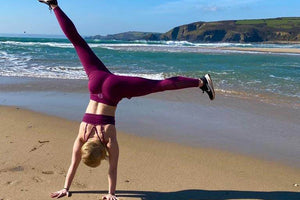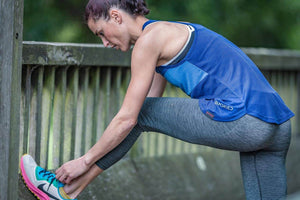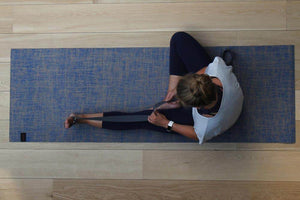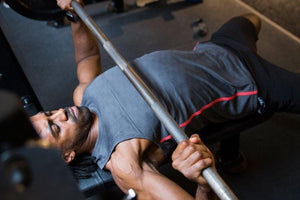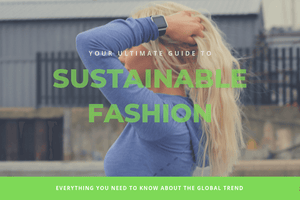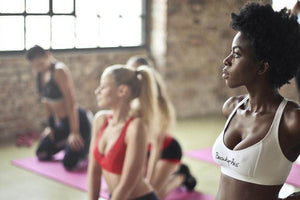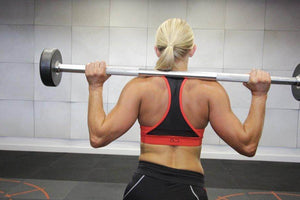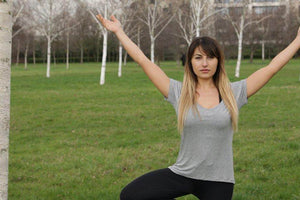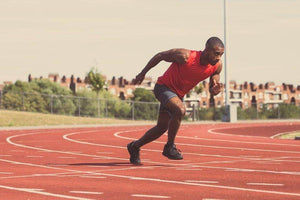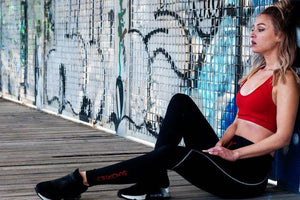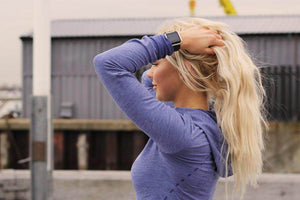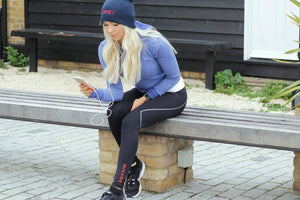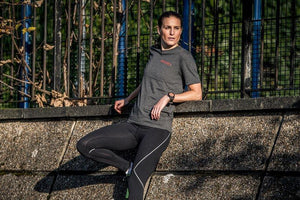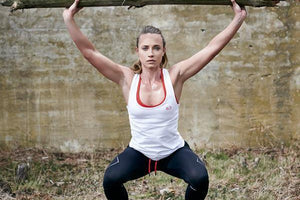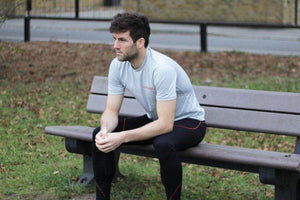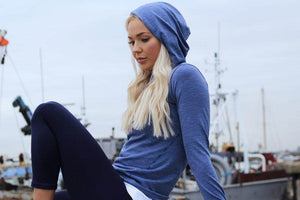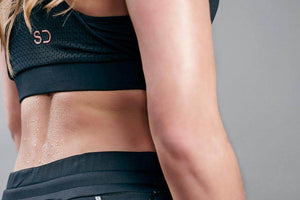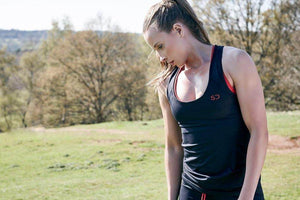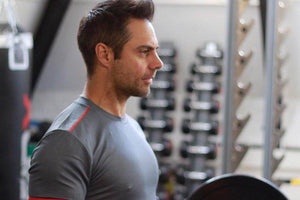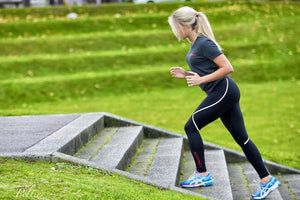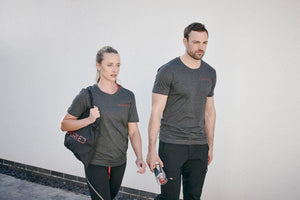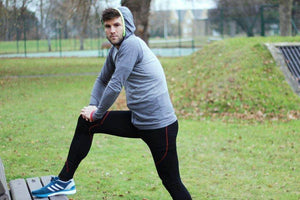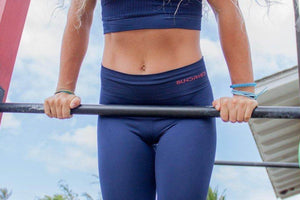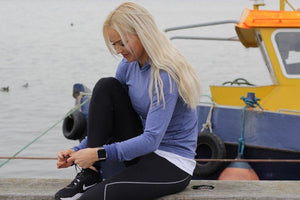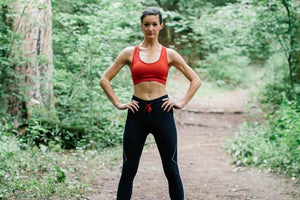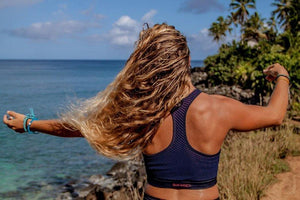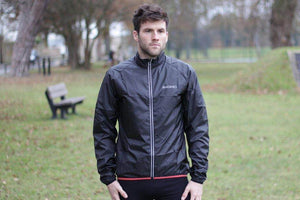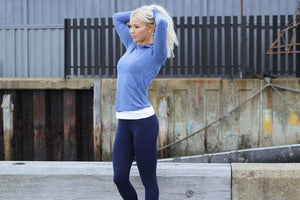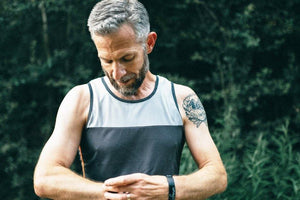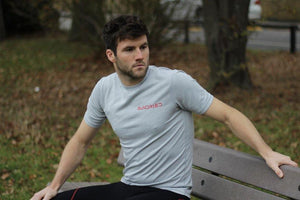
There’s just over two months until the London Marathon and endurance race season in general, begins. That’s two months of blood, sweat and probably a few tears before you eventually cross the finish line glowing with adrenaline and accomplishment. Your activewear can make or break your marathon success and the months of training you have to do before it. Pick the right running clothing and training will be a lot easier. Choose equipment that doesn’t last and you won’t just find yourself out-of-pocket.
Why the right activewear is important
Hitting the ground running (excuse the pun) with your training is likely to be your first priority. But take a step back and consider your equipment first. Getting the right activewear will make training much more comfortable, efficient and safe. A marathon is one of the toughest things you can put your body through. Training for one involves running miles and miles for months beforehand. Investing in the right equipment will stop you wasting energy on your runs, make those runs (and other exercise) more comfortable, and most importantly it will keep you safe and less prone to injury.
Running shoes are the first investment
Experts recommend that you start off with around 15 to 20 miles weekly if you’re a completely new runner, building to a peak of 35 to 50 miles. At the very least, you’re going to need running shoes that can withstand such long distances. Get yourself a decent pair of running shoes that will effectively support your feet. If you’ve never purchased a pair of these before, head down to a specialist running store to get their advice. The pair that you end up with depends on your running style, form and any pre-existing weaknesses you may have (like injury-prone ankles).
You’ll want your running shoes to be lightweight so that you don’t spend energy needlessly. They should be well-cushioned, supportive, and a comfortable fit. If you’re running on a road you’ll need a different trainer to one designed for trails.

Top Tip: Buy your running shoes in the late afternoon - never in the morning. Your feet swell during the day, so a pair that fit snugly at 7am may be too tight by 5pm.
As a ball park figure, expect to pay between £70-£150 for a good first pair of running shoes.
However, you won’t just need one pair of shoes. A good training schedule will encompass more than just running, so you’ll also need a pair of shoes suitable for the gym and/or strength training. Some runners also prefer to alternate shoes, depending on where they are running (the terrain) and their pace. Training and race shoes have different requirements, so if you’re feeling dedicated, get yourself a couple of different pairs.
Clothing for running and cross-training
The next step should be to look at your wardrobe. Choose clothing built with materials that will allow your skin to breathe, wick moisture, remain relatively odourless and that isn’t too constricting. You’re going to be running for a long time, so you’ll want to remain comfortable.
You’ll be training in all seasons, so it’s worth considering what different equipment you’ll need when it’s warm and when it’s freezing. Temperature control clothing will help you remain warm when training through the winter, and will keep you cool in summer.
Prioritise an ethical activewear company too - especially if you’re running the London Marathon for a good cause. You don’t want your hard work in contributing to a better planet being undone by an unsustainable clothing choice!
As a start, you should buy a few tops, shorts or leggings, socks and, for the ladies, a supportive sports bra (or several, if training daily). You might also want to consider a running jacket for colder months and a visor and sunglasses for sunny days.

Other fitness equipment to consider
As well as the clothing and shoes that you’re going to wear, you should also consider other essential equipment that will impact your training. Handheld water bottles will keep you hydrated during a run. Running belts or vests can keep your valuables safe and also contain snacks and gels for long runs. Running gloves might be an added comfort in cold weather. Ideally, they should be touchscreen enabled so you can access your running playlist quickly. Speaking of which, a phone armband will keep your music accessible whilst safely storing your phone out of harm’s way.
Chafing can be an issue for runners, so investing in a specialised chafing balm and some Vaseline will help keep sore skin and blisters at bay. On race day, it might be worth having a dedicated race belt that will keep your number secure. As was found in 2018, if you lose your number during the London Marathon you cannot finish the race - and someone might try to take the glory from you.
Finally, you’ll not just be hitting the road but also the weights. A pair of weight gloves are relatively inexpensive and will stop your hands from blistering or getting hard skin. They will also improve your grip, making it less likely that a heavy weight will slip out of your hands and cause injury.
A marathon always starts with the equipment
You cannot run a marathon or train for one without the right equipment behind you. Don’t be tempted to skip shopping for your running gear. Taking the time to choose the best activewear and trainers for your body will pay off in the long run. You’ll be thankful for all your equipment when you hit mile 25 on marathon race day.
About the author: Jay Curry is founder and head personal trainer at Jays Way Personal Training. He trains a range of clients, from soon-to-be brides to corporate groups, people getting marathon-ready and the British Army. Jay is passionate about varied training that builds mobility and functional strength. His programmes include HIIT, boxing, circuit training, and strength - and have been featured in the Huffington Post and Waitrose Health amongst others.



